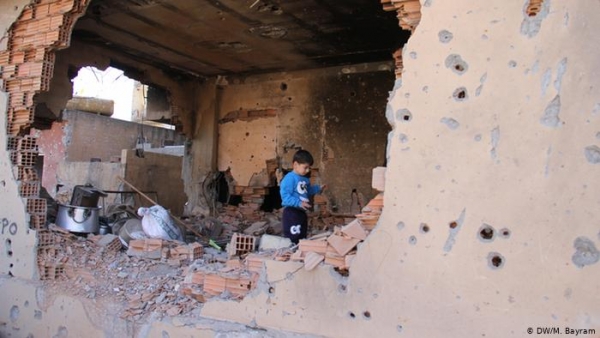The AOAV report, published in October 2020, reveals the devastating effects of explosive weapons on children in Turkey; at the same time, it highlights how the lack of qualitative and quantitative research hampers a true understanding of the phenomenon within the region.
Turkey has been affected from war since 1984, when the Kurdistan Workers’ Party (PKK) – an armed opposition group fighting for self-determination – and the government forces entered into conflict with one another for the first time. According to the Non-Governmental Organization (NGO) Minority Rights, Kurds are the largest ethnic and linguistic minority in Turkey, representing around 18% of Turkey’s population. The war, alongside the policy of Kurds’ village destruction carried out by the Turkish government, forced more than one million Kurds to leave the eastern and south-eastern rural regions of the country where they were situated and to resettle.The Internal Displacement Monitoring Centre (IDMC) counted 953,700 Kurdish internally displaced persons (IDPs) as of December 2014.
On 20 July 2015, there has been a resurgence of violence in the Kurdish regions of the country, due to a suicide bomb attack, orchestrated by the Turkish government, in the predominantly Kurdish district of Suruç. The AOAV’s explosive violence monitor registered that between 2011 and 2019, Turkey has seen 5,264 deaths and injuries from explosive violence – 67% of these civilians. Only between 2014 and 2015 there was a 7,682% rise in civilian casualties due to explosive violence.
The Human Rights Foundation in Turkey (HRFT) reported that, following this resurgence of violence in the country – and in particular in the areas bordering Syria –, “hundreds of thousands of youths might have been exposed to direct or indirect conflict-related incidents, such as combat; physical injuries; the death or injury of family members, relatives, or significant others; separation from family members, relatives, or friends; or residence or school changes”. Indeed, according to HRFT reports, of the 321 civilians killed between 2015 and 2016, 79 were children aged from 0 months to 18 years. Moreover, data report that during the clashes between August 2015 and August 2016, children were subjected to severe human rights violations, namely: they were targeted by snipers; firearms were used against them by security forces; they were denied access for treating firearms injuries or even for controlling ordinary illness.
The explosion of ‘conflict waste’ also constitutes a cause of injuries and death in children in Turkey: HRFT reports the death of the 13-year-old Firat Simpil and of Mevlüde, a 4-years-old girl. AOAV reports that 88% of civilian deaths and injuries between 2011 and 2019 were caused by Improvised Explosive Devices (IEDs). The war also hindered children’s access to education, because of the destruction of infrastructure, leaving 325,000 children out of school (Educator for Peace Initiative). Moreover, Kurdish children are also at risk of being imprisoned and prosecuted by the Turkish government.
The psychological consequences of the conflict have a huge impact on children who often experience problems in adaptation, language and communication, psychological well-being and an increased instance of dropouts from schools, as shown by the findings of a 2004 Basak Culture and Art Foundation report. The developmental delay of Kurdish and Syrian refugees that goes with it is not accompanied by adequate research of the mental and physical state of children in the Kurdish parts of Syria bordering Turkey.
The more recent trans-border attacks carried out by Turkey determined the displacement of around 180,000 people in North-East Syria, 70,000 of them are children, who, according to a United Nations report “require psycho-social first aid and support, after witnessing explosions and shelling and living in fear in midst of the fighting”. The fact that Turkish authorities still today refuse to investigate civilian deaths and keep imposing media and internet shutdowns make it very hard for experts to obtain a clear understanding of the impact of the Turko-Kurdish conflict. In particular, more research is needed in order to understand the impact of forced migration on child health and development.
To know more, please read:
https://aoav.org.uk/2020/the-impact-of-explosive-weapons-on-children-in-turkey/
https://minorityrights.org/minorities/kurds-2/
Author: Laura De Pascale




